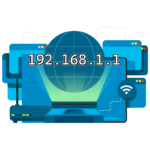Optimize Operating System for Better Performance
Optimize Operating System is essential for maintaining a fast, efficient, and responsive computer. Whether you’re using Windows, macOS, or another OS, regular maintenance and tweaks can significantly enhance performance, reduce lag, and prolong the lifespan of your device. This guide will walk you through the steps to Optimize Operating System for better performance.

1. Remove Unnecessary Startup Programs
When your computer boots up, it might load several programs that run in the background, consuming valuable system resources. To Optimize Operating System ‘s performance:
- Windows: Use the Task Manager (Ctrl + Shift + Esc) and navigate to the Startup tab. Disable unnecessary programs from launching at startup.
- macOS: Go to System Preferences > Users & Groups > Login Items. Remove items that you don’t need to start automatically.
Reducing the number of startup programs can significantly decrease boot times and free up system resources.
2. Keep Your Operating System Updated
Operating system updates often include performance improvements, security patches, and bug fixes. Keeping your OS up to date is crucial for optimal performance:
- Windows: Go to Settings > Update & Security > Windows Update and check for updates regularly.
- macOS: Open System Preferences > Software Update to ensure you have the latest version installed.
Regular updates help your system run smoothly and securely.
3. Clean Up Your Hard Drive
Over time, your hard drive can become cluttered with temporary files, cached data, and other unnecessary files. Cleaning up your hard drive can free up space and improve performance:
- Windows: Use the built-in Disk Cleanup tool (search for “Disk Cleanup” in the Start Menu) to remove temporary files, system cache, and old system files.
- macOS: Use the Storage Management tool (Apple menu > About This Mac > Storage > Manage) to find and delete unnecessary files.
Consider using third-party tools like CCleaner or CleanMyMac for more advanced cleanup options.
4. Defragment and Optimize Your Hard Drive
If you’re using a traditional hard disk drive (HDD), defragmentation can help reorganize fragmented data, improving read/write speeds and overall performance:
- Windows: Use the built-in Defragment and Optimize Drives tool (search for “Defragment” in the Start Menu).
- macOS: macOS automatically handles file fragmentation, so manual defragmentation is unnecessary.
If you’re using a solid-state drive (SSD), defragmentation is not needed, but regular optimization (through system tools) is recommended.
5. Manage Your System Resources
Monitoring and managing your system’s resource usage can help you identify and address performance bottlenecks:
- Windows: Use Task Manager to monitor CPU, memory, and disk usage. Close resource-hungry applications or processes that you don’t need.
- macOS: Use Activity Monitor (found in Applications > Utilities) to keep track of system resources and close unnecessary applications.
Regularly checking resource usage can prevent your system from becoming bogged down by unnecessary tasks.
6. Optimize Visual Effects
While visual effects can enhance the appearance of your operating system, they can also consume significant system resources. Disabling or reducing these effects can boost performance:
- Windows: Go to System > Advanced system settings > Performance Settings. Choose “Adjust for best performance” or manually select which effects to disable.
- macOS: Reduce transparency and motion effects by going to System Preferences > Accessibility > Display.
Optimizing visual settings can make your system run smoother, especially on older hardware.
7. Uninstall Unnecessary Software
Unused software can take up valuable disk space and slow down your system. Regularly uninstalling programs you no longer use is a good practice:
- Windows: Go to Settings > Apps > Apps & features and uninstall programs you don’t need.
- macOS: Drag unwanted applications from the Applications folder to the Trash.
Removing bloatware and unnecessary software can greatly improve system responsiveness.
8. Adjust Power Settings
Power settings can impact your system’s performance, especially on laptops. Adjusting these settings can help you strike the right balance between performance and energy efficiency:
- Windows: Go to Settings > System > Power & sleep > Additional power settings. Choose “High performance” for better speed or “Balanced” for a mix of performance and energy savings.
- macOS: Go to System Preferences > Energy Saver and adjust the settings according to your needs.
Choosing the right power settings can help your system run faster when needed.
More to Explore
- Learn how to troubleshoot common operating system error to maintain optimal performance.
- Find out how to choose the right operating system for your specific needs.
- Check out Microsoft’s guide for optimizing your Windows PC.
- Read Apple’s official tips for optimizing your macOS device.
Conclusion
Optimize Operating System is crucial for ensuring your computer runs smoothly and efficiently. By following these steps—removing unnecessary startup programs, keeping your OS updated, cleaning up your hard drive, managing system resources, and more—you can significantly improve your system’s performance. Whether you’re using Windows, macOS, or another operating system, these tips will help you get the most out of your device.
Related
Discover more from Computer Climax
Subscribe to get the latest posts sent to your email.






One Response